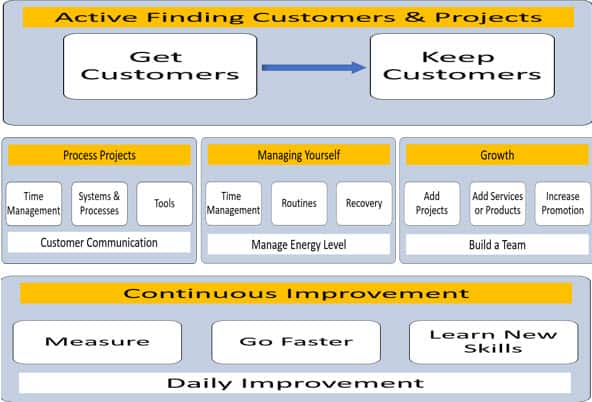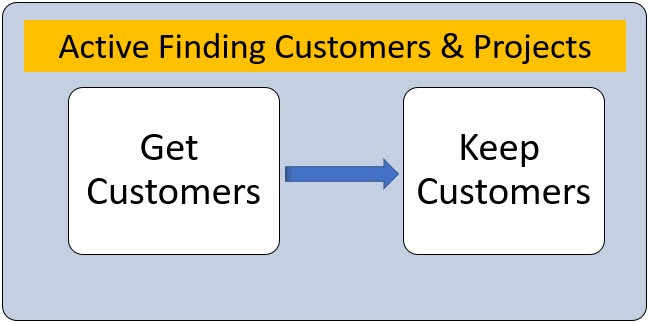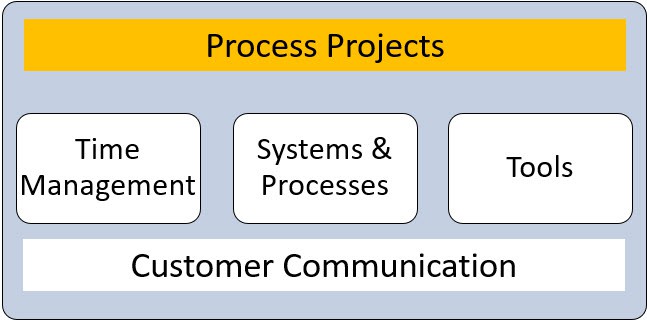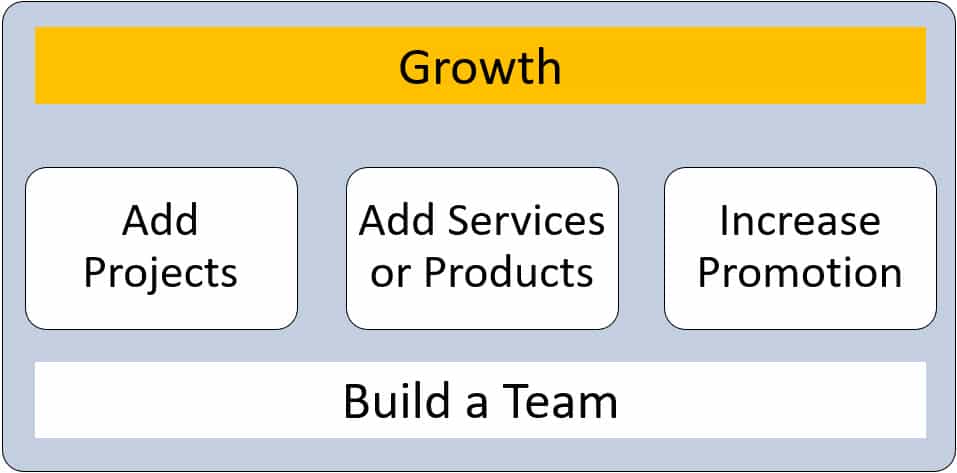
So you made it. You’re on your way to become a digital nomad because you have made a solid decision to start this lifestyle or you are just beginning by having moved to a foreign country. Alternatively, you might already be a digital nomad and looking for ways to improve your business. The next step in your journey, which you must take seriously, is to build your business. It’s the effective worker side of being a digital nomad entrepreneur.
One of the keystones to your success and to continue your lifestyle is that you must be effective at being an entrepreneur. It is no easy task, and it will take a lot of focused work.
In the article on this website titled “The Cool Adventure Side of the Digital Nomad Lifestyle” (check it out HERE), I outlined how one could make the best of the digital nomad lifestyle with a focus on adventure and travel planning in day-to-day life.
In this article, I’m going to cover what I have learned from running my own startup company and living as a digital nomad. I’ll also add some fundamental wisdom from successful entrepreneurs with whom I have met over the years. In detailing these key skills on the effective worker side of the digital nomad entrepreneur, my hope is that it will give some structure in the framework on how to build your business and how to be a more successful digital nomad entrepreneur. Let’s get started.
A Framework of Effective Working for Digital Nomad Entrepreneurs
Here is the framework for the effective worker side. It is divided into five sections – Active in finding customers and projects; Process projects; Managing yourself; Growth; Continuous improvement.

Now let’s go over these in detail!
Get Customers and Projects
There are many things that you need to do when starting your business as a digital nomad or when you already have an established company. But the number one priority area that deserves attention every day is about getting customers and projects. Without getting customers and projects, you will not have a company for very long. Although this is common sense and very logical thinking, it is surprising that young entrepreneurs spend hours or days working on their website design, or tweaking some marketing content or even just planning how they’re going to run their business. The focus must be on getting customers and projects above all else. Also, when you do have some customers or projects, part of your time should be spent on looking for or proposing new projects.

Be Active in Finding Projects
Be active in finding projects by identifying the key platforms where you can either advertise your skills or respond to requests for projects.
I recommend that you are active on these platforms by creating a great profile, take five minutes every day to take a look to see if there are any new job ads in your skill area and once you have found a close match, be very quick in applying for the project.
The more active you are, the better chances you will have at securing a project.
Use of the Sales Approach And Know Your Ratios
When searching for new projects and customers, it is best to take a sales approach for this. It means that in the big picture, you will have to apply for multiple jobs before you secure one. In practice, that means that for every ten jobs you have applied for you might acquire one. So if your target is to have two projects per week, you need to apply for 20 if your closing rate is 10 to 1. By using the sales approach and having an understanding of your closing ratios, it will give you a better idea of how much prospecting work you need to do to get a certain amount of projects.
Of course, a 10 to 1 ratio is not the rule – it may be that in your industry and skill set, you can secure a project after only three applications. But the main point here is to understand what your ratio is. Also, by taking a sales approach, you should not be too frustrated when your application is rejected. Keep your eye on the ratio and put more effort into finding new projects to apply for.
Polish Your Profile Descriptions
When applying for projects, it’s essential that your profile looks professional and that you have detailed your experience and expertise clearly and logically. Polish this until you can rely on that it is up-to-date and presented in a way that will impact and impress your potential customer.
For instance, if you are a graphic designer freelancer, some of the ways that you can improve your profile and proposals are:
• State the type of projects you have completed
• Describe the variety of designs you have worked with
• Describe the type of designs and the artwork you can create
• Have a link to your website that shows a portfolio of your work
• Describe some of the inspirations that have impacted your designs and artwork
• Show how you are connected to some of the new trends in graphic design
Additionally, when you apply for potential projects, use some catchy phrases which will bring attention to your profile and also describe some of the projects that you have completed in a way that will connect you and your skills with the project that is being advertised. You don’t need to make it splashy or exaggerate, but try to make something that will attract the attention to you especially if you are in a field that is highly competitive like blog writing or graphic design.
Spend Your Efforts on Finding One Project
When looking for projects to apply for, one common mistake is that you apply for everything that catches your eye. A better approach may be to spend your efforts on finding one project that is a good match with your skills and securing that one. Make the quality of the match between the proposed project and your skills a high priority. In this way, you will have a better ability to create a proposal that directly matches the project and can expand on the descriptions of your expertise.
Always Contact Previous Customers Periodically
After some time, you most likely will have a list of completed projects. It’s a good idea that from time to time, you contact these previous customers and ask if they have any new work. It is much easier to convince them to choose you for a new project if you have completed a previous project for the customer. Although this can’t be your only strategy for finding new projects, you never know when your previous customer has a perfect project in mind for you. It is best to have a routine that you will email or call previous customers once a month. It doesn’t take much effort, and the results can be another full project. Best of all, the competition will be very low!
Everything starts with getting customers. If your business does not have customers or projects, there will be no way for you to sustain your lifestyle as a digital nomad. As mentioned above, this should be your number one starting point because once you have customers, you can then go on to other important areas of the effective worker side.
Process Projects
Once you have secured a new project or, with effort, multiple projects your activities will then quickly start to focus on processing these projects so that you can complete the work and get paid. Some projects, of course, do not need much thinking or organizing. It is just a “Let’s Do This!” exercise such as when you write a blog article or create some graphic art.

However, once you start to have multiple projects there will be a need to organize your time, to make sure that you’re focusing on the right steps to get your project done, and additionally there are some great tools to help you visually know where you are at each step of the way of your project. These ideas and tools can help you become more productive and finish your projects faster. So it’s worth taking a look at them in detail. They can dramatically improve and increase your productivity.
Use Modern Time Management Practices
Some of the time, management principles are ageless. There are some, however, that have progressed and have been shown to work better than others, especially with modern software applications. Here are a few that I’ve used and that are well written about.
Time blocking is a technique in which, roughly described, you block out a certain amount of time in which you focus only on this topic. During this block of time, you work to progress the activity as much as you can and then at the end of that time block, you stop. The length of time can be anywhere from 25 minutes (using the Pomodoro technique) up to an hour and a half. Although this concept has been around for decades, there are a few writers that are promoting this concept and have specific ways in which to implement it.
Deep work is another concept that is being written about by productivity experts. The idea behind deep work is similar to time blocking. However, it goes several steps further. If, for instance, you have a deep work session of four hours specified for you to progress a project task, the idea behind deep work is to close yourself off entirely to get your mind working on only this task. During the deep work session, it requires that all distractions be kept to a minimum or even eliminated. Having used the idea of deep work sessions myself, the only way that I’m able to implement this idea is to close myself into a room where I have only my computer and a timer. It sounds crazy, but it is highly effective.
One concept that is gaining momentum in the productivity area is putting your to-do list directly into your calendar. If you need to do something – even if it is just a task on a project – put in your calendar. If it’s not in your calendar, it’s not something that needs to be done. The concept of scheduling everything into your calendar to quite a while for me to get used to. I used to have this of everything to do on multiple pieces of paper or even on some digital applications. I still have multiple lists. However, the most significant changes for those activities that need to be done, I have trained myself to follow my calendar date. Using your calendar is also great for implementing the previous two ideas; it is easy to schedule a time block or deep work session.
Establish Simple Systems and Processes
Establishing simple but highly productive systems and processes is something that if you do them correctly, can lead to finishing projects faster and having the feeling that you were on top of your work.
Let’s take an example to illustrate this point. You have just secured a graphic arts poster project. You have two days to create three draft designs, and you are familiar with the art style, but the customer is asking for neon colors and an artistic style found in New York. To outline a system or process to do this project, it could be:
• Research – two hours
• First draft design sketch – 30 minutes
• Review alignment with research and customer specifications – 30 minutes
• Edit and add to first draft design sketch – 30 minutes
• Create three sketches for customer review – 60 minutes
• Send to the customer and get feedback – 15 minutes
• Corrections and editing – 30 minutes
• Finalize three designs and send to customer – 15 minutes
The total time for this is five and a half hours. You can adjust the times and the steps according to the project, of course, but this becomes the frame for a process or system for you to process your work. The way to use this is that if you have multiple projects, you know all the steps which are needed to complete the project and a rough estimate of the time. Put the specific steps into your calendar and complete them step-by-step.
By working with systems and processes and outlining the steps, you have a better chance of knowing in detail, if you need more time to complete your project. Or, if the customer asks how you are progressing and when the first sketches will come, you have a rough estimate to give the customer.
Using systems and processes to progress your work is the smart way to do things. It doesn’t have to be overly complex, but with just a little focus to detail out the processes can make a significant impact on finishing your project.
Use Organizing Tools
Whenever I’m working on a project, I need to see a visual overview of where I am in the project and exactly what the next test should be so that I can feel that I’m progressing on the project as I should be. To get that visual overview, I use organizing applications such as Trello, Asana, and others so that I can organize my activities. Occasionally, I have used these tools in conjunction with other team members, and I know exactly what they are doing in the project and how they are progressing.
These organizing tools are low-cost in considering the type of value that they provide. Interestingly, besides organizing capability and being able to see a visual overview, I find it these tools give me confidence in the peace of mind that my project is progressing and that I know what I have to do next to finish the project. Most of the tools today are also multiplatform, which means that I can access them from my computer, my tablet, and my mobile phone.
Communicate with Your Customer
If you are a digital nomad living abroad in another country, you still need to communicate with your customers. It’s a good practice to have to establish a good working relationship with your customer and even more importantly, to give confidence to the customer that you are on top of the project, that it is progressing smoothly, and that you are worth the value that they are paying for the project.
Although every project is different, one way to improve your communication with your customer is to tell them on the outset that you will send them a summary of your activity progress on a particular day at a specific time. Schedule that time into your calendar and send it over via the platform that you are using or by email. Even better, if called communication has been established in your project, tell them that you will give them a call at a certain time and day.
The importance of communicating with your customers is not only to deliver your project on time. It’s also to establish a track record of being reliable and on top of your work. Doing this will improve your chances of getting repeat work and also distancing yourself in the right way from competitors.
Be Sure That Your Projects are Delivered on Time
Delivering your projects on time and according to specification seems like a no-brainer for doing projects, but I have experience with freelancers on different platforms that have ignored this seemingly obvious recommendation.
Keep to your deadlines; do your project according to specifications. As described above, communicate with your customers to give them peace of mind that you are on top of things and progressing your project.
Be Sure You Get Paid for Your Work
Another important aspect of processing projects is to be sure that you get paid for your work. Some platforms make it easy for you to get your payment if you are using their system. However, there may be times when you are working on projects that are not on a platform, and you need to deal with invoicing and collection. Often, this takes a lot of work and a lot of follow-ups. My main point here is to make sure that this is covered as you process your projects.
Managing Yourself When Focused on Work
The effective worker side of a digital nomad entrepreneur naturally has a lot of focus on the work itself. But in the bigger picture, you must manage yourself to show up and produce the work that is needed to get done. In this section, I’m going to cover a bit more about managing yourself concerning your work.

As a digital nomad, your lifestyle provides many attractions and opportunities which can sometimes be viewed as distractions. It is a contradiction in some ways because the whole purpose of you moving to another country and immersing yourself into its culture is to have that experience. You could argue that work-life balance is actually the issue here and I would partly agree with you. In the bigger picture, however, I think it is more about managing yourself so that you can make the right decisions about your work and your adventurous lifestyle possibilities. Here are some suggestions.
-Time Management – be on top of time management for your personal life. We have already covered quite a lot about time management when it comes to working projects and processing your work. Some of those same elements apply to your free time. The ideas about time blocking, deep work, and putting all of the things that you need to do in the calendar work equally as well for your personal life. Time block periods to spend with friends, to research a neighboring city or even exercise. When you’re doing those activities, use the deep work methods to get great progress or even deep connection with the people you are meeting. You can have a separate calendar for your personal time, but I find that sometimes especially when living abroad, it is easier to have one calendar so that you have a look at the whole day both personal and business.
-Energy – Energy management is vital. Most of the time, your energy level is managed by your personal decisions about what you do outside of your work projects. For instance, regulating your energy has a lot to do with sleep, diet, and exercise. Lots have been written about this. When it comes to being a digital nomad living in another country, you actually might have more freedom than most to choose when you work and when you have time off. Therefore, it is even more important to follow and guide how you manage your energy. You cannot make much progress in your work if you are groggy from not enough sleep or extended travel from the last two days. I’ve written a guide to managing your energy on this website, and you can find it HERE
-Routines – Routines are designed to help you establish habits in your personal life so that you spend less time thinking about what you should do and instead get started with instant action. You can establish a morning, afternoon, or evening routine. For those who are early morning risers, a morning routine can help you get a head start on your day. The cool thing about routines is that if you put in the essential things in your personal life like exercise, connecting with key friends, learning an extra skill, you end up taking action on these with minimal effort. Routines are also great for focusing on improving an area of your personal life daily.
-Recovery – Recovery is essential. Recharging your batteries is typically done on personal time and not during the work. Depending on how you recover from a heavy workload on a project or an active trip where you were backpacking for days, it’s vital to schedule recovery activities. By doing so, you have a better chance of avoiding burnout, and this can happen in your work-life and from traveling too much. Check out the article that I wrote about digital nomad burnout HERE
Growth
The last section which will be covered is about growth. Growing your business has many upsides and downsides. Additionally, it can be very complex because it has repercussions on your time and choices you might make in your personal life. Overall, however, growth is good, and you must take a look and decide how you want your business to grow and choose the right direction. Here are some of the ideas that a digital nomad entrepreneur can use to grow their business.

-More Projects or Bigger Projects – A fast way to grow that is relatively obvious is to take on more projects or take on bigger projects. Although this is obvious, the repercussions of having more or bigger projects are not so simple for a digital nomad entrepreneur working by themselves. You need to take a look at how many more projects you can handle each week and if you’re taking on more significant projects, that you can manage the workload to continue delivering on time.
-Build a Team – Another way to grow is to add workers to your projects. By adding one or two extra people to progress your projects faster, it will open up possibilities for you to take on more or bigger projects. The drawback to this is that if you hire someone, you need to be sure that you will be getting more projects.
-Add a New Product or Service – adding products or services to your project bids can help you to increase the price that you charge. It can add extra revenue and can also make your offering to potential customers more attractive. You cannot add multiple new products or services quickly. Often, you need to develop the product or the service before you start to offer it. However, it is a reliable way for you to add income
-Increase your Promotion – Spending time and money on promotion in the platforms that are offering projects can be a useful way to get more customers. There are multiple ways to do this. You can bid on more projects, you can improve your marketing materials and descriptions of your expertise area, and you can even build a website to show your portfolio of completed projects and work.
Constant Improvement
The next step in the effective worker side of a digital nomad entrepreneur is to talk with trade on constant improvement. By this, I mean that all the things that you are doing in your work to progress your projects and complete them are improving all the time.

I am a firm believer in the idea that “Improvement is found in the processes you measure.” It is much easier to improve a process than it is to improve something as abstract as a habit. Processes are very specific, and you can set particular actions within the process to measure. Here are some concrete ideas on how to improve your work projects.
-Do processes faster – Focus on doing your processes more quickly. Measure how long it takes for you to go through the whole system of processes. Identify your slowest process. Then make a specific initiative to do that process faster. If you have multiple projects, you can track how each process that you want to speed up is taking. For instance, consider the example above about the graphic arts poster. That one was framed to be 5.5 hours. The most extended block of time was spent on research, two hours to do the research. The next time you have a project, using this example, see if you can complete the research in 1.5 hours. It is the idea of doing processes faster.
-Improve your response time – Improving your response time relates to communication with the customer. When you are bidding for projects or are working on progressing project, you may be getting requests and communications from your customer. One of the ways to improve your working relationship with customers is to speed up the response time you give to your customers. By doing so, it enhances the speed of your project and also gives the perspective that you are reactive to requests from the customer.
-Measure more – The more processes you measure, the better idea you have of how fast you can complete a project. You can detect what activities you are fast with processing and which ones you are slow. If needed, you can outsource and hire people to do the tasks which you are slow with. By measuring more processes, you will speed up the whole project delivery system.
-Look at the big picture – From time to time, one should always take a look at the big picture and ask where to focus for improvement. For instance, if you know that you can take on more projects per week, then you can focus on improving the sales process and increase the number of projects you bid for. Alternatively, you can decide to improve the quality of your experience description and create a more catchy message. If you have outlined specific process steps in your system, you will have a head start to go from the big picture to focus on the needed process that needs improvement.
-Learn More About Your Area of Expertise – No matter how much experience you have, there will always be things that you don’t know or can improve upon with some education. Take a new course which is trending in your industry. Go back to the basics and decide exactly which primary area you can learn more about. To come across as an expert when you’re bidding for projects and when you have finally secured one to deliver, the more education or certificates or knowledge that you have about your expertise area, the more momentum you will create in your chosen field
-Daily improvement – If you back to the idea introduced earlier in this section that improvement is found in the processes you measure, then an amazing way to improve faster is to try and make a daily improvement on a specific process. I’ve used this concept many times in my work and my personal life, and I find that this idea gives me more progress if I do this daily. If daily is too big of a step for you, then try to make one improvement weekly. Start slow and build yourself up.
Celebrate the Wins – Every Single One of Them
I once worked with a widely popular vice president in China. Almost everyone I talked to on the senior management level, new this person and he pretty much had a stellar reputation for building the business and inspiring the people. I had occasion to ask him directly as well as talk with many of his colleagues, how was he able to be so successful? His answer, which was similar to colleagues, can be summed up in a simple phrase – “Celebrate the wins, every single one of them. Work hard for them and when you have reached them celebrate it.”
Final Thoughts
Having a business and living abroad when your digital nomad can be complicated, frustrating, and time-consuming. On the other hand, your business provides your income to keep your lifestyle, and you can genuinely build something from your own talents. The ideas that we have discussed above don’t have to be all done in one day. Keep in mind the concepts of continually improving every day.
Focus on those processes and systems. They will help you the most when you start to grow. From time to time, take a big-picture view of where you are going with your business and what you want to accomplish in the next 6 to 12 months. Then find what is missing and work on that.
The effective worker side of the digital nomad entrepreneur is an important skill, and you can methodically become better at it. Keep working and use these ideas to your benefit.
I’m the owner of Digital Nomad Explorer. I’ve traveled to over 50 countries and been an expat in Scotland, Finland, and China. I was a digital nomad while having my own robotics company and traveled throughout Europe and China working remotely. Currently, I’m location independent with a home base in Kirkkonummi, Finland.
